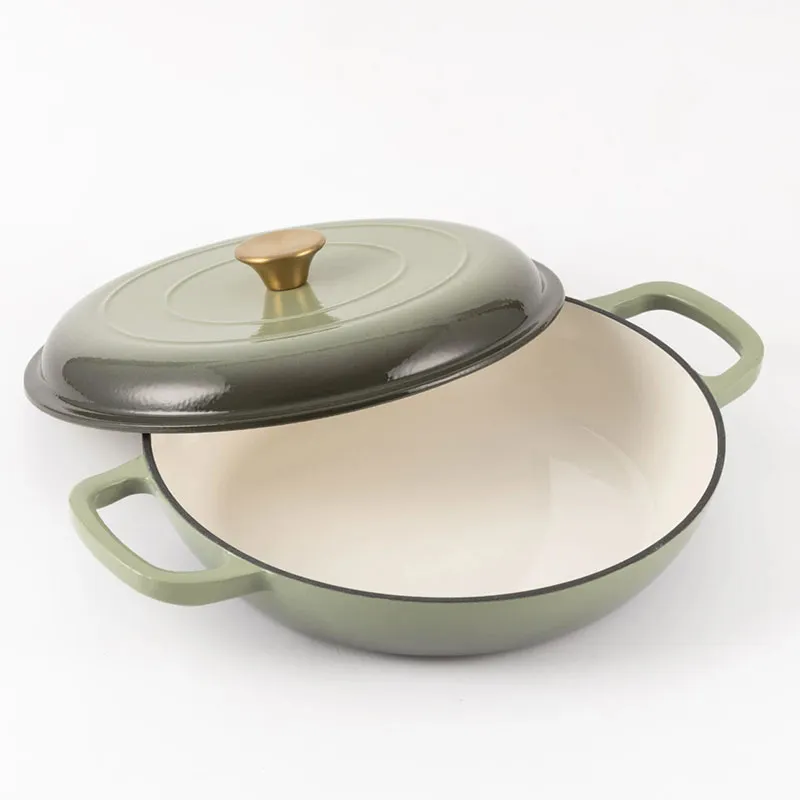
Is enameled cast iron superior to traditional cast iron for cooking and durability?
Is Enameled Cast Iron Better than Traditional Cast Iron?
When it comes to cookware, cast iron has long been a favorite among chefs and home cooks alike. Its ability to retain heat, distribute it evenly, and develop a natural non-stick surface with proper seasoning makes it a beloved material in kitchens around the world. However, enameled cast iron has gained popularity in recent years, prompting many to wonder whether it is indeed better than traditional cast iron. In this article, we will explore the differences, advantages, and disadvantages of both types of cookware to help you make an informed decision.
Understanding Cast Iron and Enameled Cast Iron
Traditional cast iron cookware is made from molten iron, which is poured into molds to create various shapes, such as skillets, Dutch ovens, and griddles. The cookware is seasoned with oil, which creates a natural non-stick surface and adds flavor to dishes over time. However, this seasoning requires maintenance and can wear off with use.
Enameled cast iron, on the other hand, features a layer of enamel coating applied to the cast iron surface. This enamel can come in a variety of colors and finishes, offering aesthetic appeal. Unlike traditional cast iron, enameled cast iron does not require seasoning and is generally easier to clean. Additionally, the enamel coating prevents the cookware from reacting with acidic ingredients, such as tomatoes or vinegar, which can be a concern with bare cast iron.
Advantages of Enameled Cast Iron
1. Ease of Use and Maintenance Enameled cast iron is user-friendly. The absence of seasoning requirements means you can use it straight out of the box. It is also dishwasher-safe, although handwashing is recommended to prolong its life.
2. No Rusting Traditional cast iron can rust if not properly seasoned or stored, especially in a humid environment. The enamel coating prevents rust and protects the underlying iron.
3. Versatility with Ingredients Enameled cast iron can handle acidic foods without damaging the surface. This makes it ideal for cooking tomato-based sauces or dishes that require vinegar.
is enameled cast iron better than cast iron

4. Aesthetic Appeal The vibrant colors and glossy finish of enameled cast iron make it visually appealing. It can transition from stovetop to oven to table, allowing you to serve directly from the cookware.
Disadvantages of Enameled Cast Iron
1. Price Enameled cast iron cookware is generally more expensive than traditional cast iron. The manufacturing process and materials contribute to the higher cost.
2. Chipping and Cracking While the enamel coating is durable, it can chip or crack if dropped or subjected to sudden temperature changes. This can compromise its appearance and functionality.
3. Heat Conservation While both types retain heat well, enameled cast iron may not conduct heat as effectively as traditional cast iron, potentially leading to hot spots during cooking.
4. Weight Both enameled and traditional cast iron cookware can be heavy. However, enameled pieces may feel slightly heavier due to the added enamel coating.
Conclusion
The decision between enameled cast iron and traditional cast iron ultimately comes down to personal preference and cooking style. If you prioritize ease of maintenance, versatility with recipes, and visual appeal, enameled cast iron may be the better option for you. On the other hand, if you enjoy the process of seasoning your cookware, value the cost-effectiveness, and appreciate the unique flavor that traditional cast iron imparts, then stick with classic cast iron.
Each type has its benefits and drawbacks, but both can be valuable additions to your culinary arsenal.
-
Season Cast Iron Perfectly with GPT-4 Turbo TipsNewsAug.01,2025
-
High Quality Cast Iron Cookware - Baixiang County Zhongda MachineryNewsAug.01,2025
-
Premium Cast Iron Pan: Durable & Perfect HeatNewsAug.01,2025
-
High Quality Kitchen Durable Black Round Cast Iron Cookware Pancake Crepe Pan-Baixiang County Zhongda Machinery Manufacturing Co., Ltd.NewsAug.01,2025
-
Cast Iron Cookware - Baixiang County Zhongda Machinery | Nonstick, Heat ResistanceNewsAug.01,2025
-
High Quality Kitchen Durable Black Round Cast Iron Cookware - Baixiang County Zhongda Machinery | Non-Stick, Heat Retention, DurableNewsJul.31,2025


